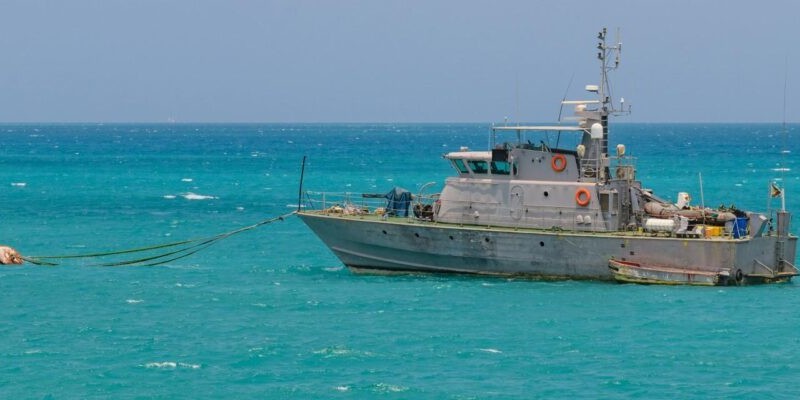As the international community seeks to regulate the rich tapestry of the planet’s seabed while countries and corporations race toward deep-sea extraction opportunities, here’s what you need to know about the International Seabed Authority (ISA) — and why it matters now:
What does it do?
The ISA manages mineral resources found on the seabed beyond national jurisdiction — an area that covers 54% of the world’s oceans — for “the common heritage of mankind.”
Established by the United Nations Convention on the Law of the Sea in 1994, the ISA’s mission is to ensure that all economic activities in the deep seabed, including mining, are responsibly regulated and managed.
Mandated to ensure the effective protection of the marine environment from harmful effects that may arise from deep-sea activities, the ISA’s work contributes to the 2030 Agenda for Sustainable Development.
The deep seabed is home to rich biodiversity and a wide range of rare earth minerals.
Why does it matter now?
As the only international body in the world focused on the deep-sea area beyond national borders, the ISA is addressing urgent concerns — from the plastic waste littering our oceans to the race to secure rare earth minerals for the world’s insatiable demand for lithium batteries and advanced technologies.
What kind of rare earth minerals lie at the bottom of the oceans?
Cobalt, copper, gold, lanthanum, neodymium, nickel, silver, yttrium, and zinc, to name just a few.
Currently, countries can operate in their own territorial waters or exclusive economic zones (EEZs). But under international law, the seabed beyond national jurisdictions belongs to no single country or company. As ISA Secretary-General Leticia Carvalho recently wrote in an editorial:
“It is our shared heritage,” she said.
Image: An active underwater volcano.
What is the draft Mining Code?
As nations increasingly seek new sources of rare earth minerals to meet the demands of technology and renewable energy (like mobile phones and computers), the high seas are rich in untapped resources. This is where the ISA’s Mining Code comes in.
During its 30th session, ISA members are working on a draft Mining Code aimed at protecting the marine environment and ensuring that all activities in the deep-sea region are carried out responsibly — in line with environmental sustainability and the common good.
Image: A food container seen 4,947 meters deep on the slope of an underwater canyon near the Northern Mariana Islands in the Pacific Ocean.
Tackling the « missing plastics paradox »
Plastic pollution is another major concern. To address this and other urgent issues, ISA members adopted a global research agenda in July 2020 — a roadmap for oceanic scientific research — with six strategic priorities. These include deep-sea knowledge advancement, data-sharing promotion, and ecosystem insights — especially regarding deep-sea plastic pollution.
This growing global issue could have major consequences for the sustainable exploitation of the oceans. In 2019, the plastics industry produced over 450 million tons of plastic — a number projected to grow in coming decades, further stressing marine species. Yet, a portion of plastic that enters the ocean remains unaccounted for — a phenomenon known as the “missing plastics paradox.”
Some researchers suggest that the deep sea may act as a sink for plastic debris, whose prolonged persistence could pose serious risks to these fragile environments.
Image: Acorn worms and other marine life have been observed in the deep sea around the Northern Mariana Islands in the Pacific Ocean.
The new Global Deep-Sea Biobank
The ISA also recently began filling its new deep-sea biobank, launched in June on the sidelines of the United Nations Ocean Conference in Nice, France. The Deep-Sea Biobank Initiative (DBI) aims to improve access to deep-sea biological samples and genetic data collected from the international seabed area.
Designed to promote inclusive scientific collaboration and deep-sea research — especially for developing countries — the initiative will establish a global repository of organic samples and standard operating procedures to enhance data quality, sharing, and use among stakeholders.
“The DBI is ISA’s response to the growing need to advance research, share data, build capacity, and facilitate access to deep-sea knowledge — especially for developing nations,” said ISA Director Carvalho.
“Our goal is to create standardized and equitable pathways for scientific collaboration and empower countries and institutions to explore, understand, and protect the ocean’s most remote ecosystems.”
The International Seabed Authority has thus become a central institution in the global ocean governance architecture, reflecting a growing focus on responsible and sustainable use.
Diving into DeepData
The wealth of data and information collected by the ISA has been essential to the development of environmental management plans. Every byte of data from deep-sea exploration provides critical insights into ocean life and guides decision-making.
With the launch of DeepData in 2019, the ISA created the most extensive and comprehensive global framework for environmental data and information related to the deep sea.
How much data has been collected?
As of May 2023, DeepData contained more than 10 terabytes — roughly equivalent to 6.9 million Instagram uploads. Widely accessed globally, it received about 2.4 million visits in 2022 alone, and has been cited in more than 160 scientific publications.



